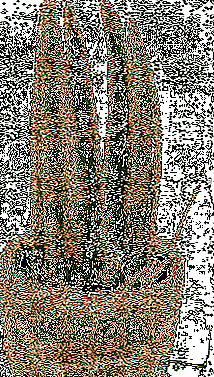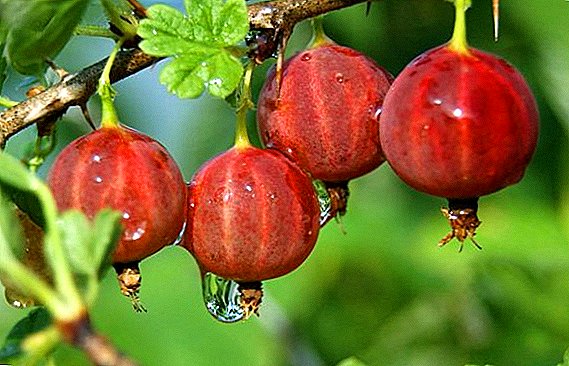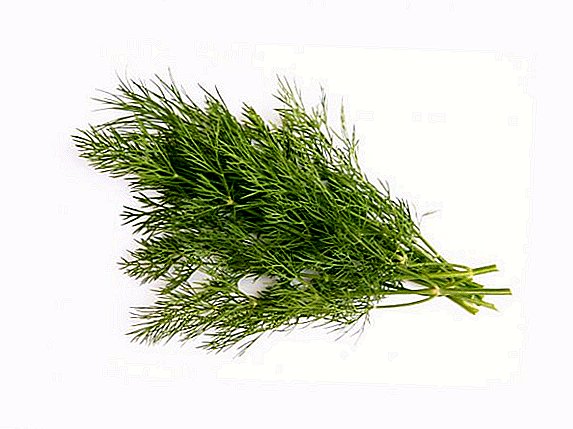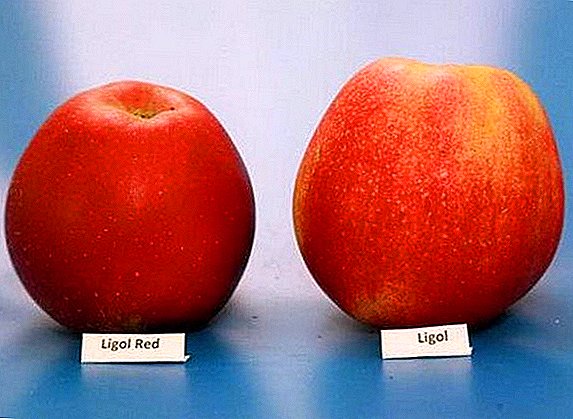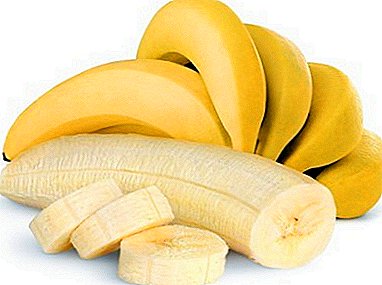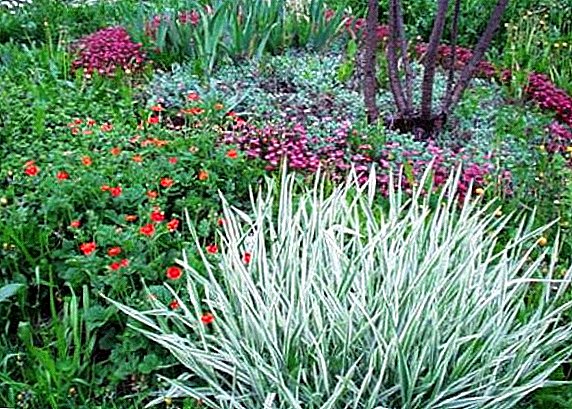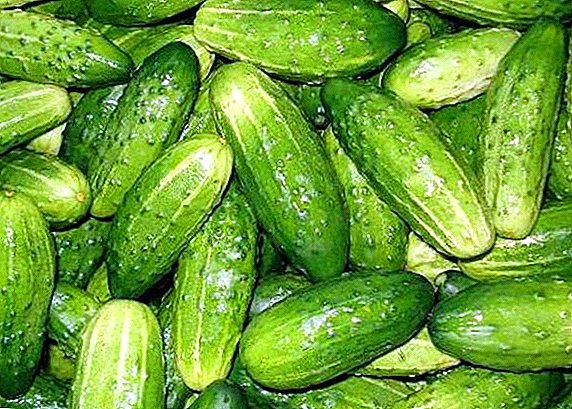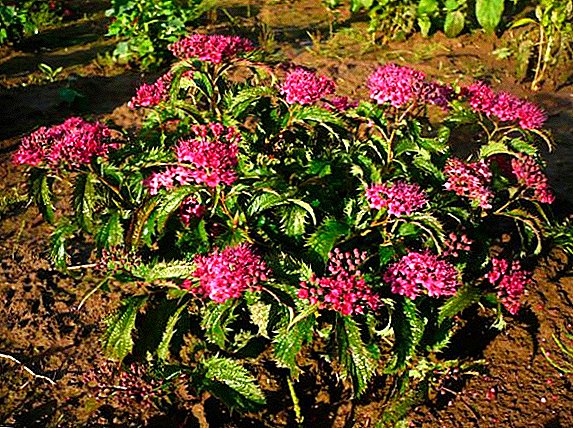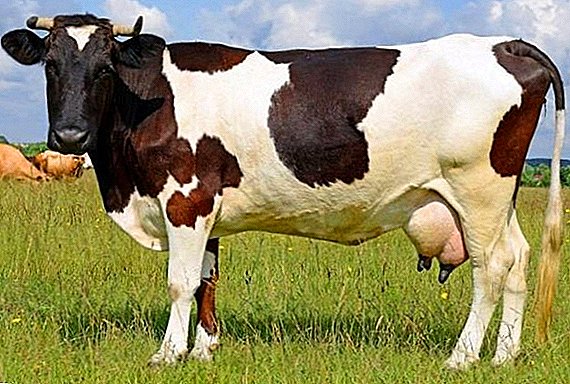 About the vaginitis in cows know firsthand many owners of this cattle.
About the vaginitis in cows know firsthand many owners of this cattle.
In this article we will describe in more detail about the pathogens of this disease, its symptoms, as well as the therapeutic and preventive measures necessary for the livestock to be healthy.
What is vaginitis?
Vaginitis is a disease of the vagina, characterized by inflammation and resulting from the penetration of infection there. At the same time, the threshold of the vagina and the vagina itself are inflamed. Most often young chicks at this age, as well as animals with weakened immunity, suffer from this disease. 
Pathogen, sources and routes of infection
The causative agent of this disease is microbe streptococcus, but vaginitis can be a sign of other diseases, such as trichomoniasis, brucellosis, or embryosis.
Important! There have been cases when not only adults but also calves were sick with vaginitis, so it is worthwhile to closely monitor the health of animals of all ages.
The main source of the disease is sick cattle, especially if the disease is acute.
Ways of penetration of the disease in the body of animals can be different:
- in contact with a sick animal, including through sexual contact;
- when using contaminated litter or slurry;
- due to dirty animal care items;
- with injuries during childbirth.
Symptoms of the disease
In order to timely detect the disease, you need to know about the main signs of its manifestation.  Vaginitis in cows is characterized by the following symptoms:
Vaginitis in cows is characterized by the following symptoms:
- anxiety;
- frequent urination;
- the animal often wags its tail and stands, spreading its hind legs due to itching in the vagina;
- swelling provokes an increase in the genitals;
- the vulva becomes more saturated red;
- mucous and purulent or bloody vaginal discharge, characterized by a bad smell;
- if the disease is chronic, there may be small dark red nodules in the vagina, which eventually turn yellow.
Important! When nodules appear, you should not immediately sound the alarm, as they may be associated with irritation or trauma.
Diagnostics
The incubation period of the disease depends on the route of infection in the body of the cow. If you make symptoms, they will begin to manifest from one to five days after infection. In other cases, the incubation period takes up to ten days.
At the first signs of the disease, you must call a veterinarian. The specialist will take some discharge from the vulva from the animal and conduct a palpation study.  The result of the survey will help identify the causative agent of the disease, which resulted in an inflammatory process. After diagnosis, treatment is prescribed that will help the sick animal.
The result of the survey will help identify the causative agent of the disease, which resulted in an inflammatory process. After diagnosis, treatment is prescribed that will help the sick animal.
Check out the main diseases in cows. Find out under what conditions cows have a risk of leukemia, ketosis, pasteurellosis, cysticercosis, as well as what to do with hoof diseases, udder swelling, mastitis in cows.
Treatment methods
When treating vaginitis, cow owners use both traditional methods and folk remedies.
Traditional treatment
Treated vaginitis mainly locally, with a course of 10-12 days. To combat the disease, solutions are used to irrigate the mucous membrane of the vagina.
For this you can use the following solutions:
- potassium permanganate in the dosage of 1: 1000;
- Vagothil. 10-15 milliliters of the agent are added per liter of water;
- "Furacilin". In a liter of water, four tablets of medication must be diluted.
Did you know? Cows are in second place among the mammals on the planet, second only to humans.
The vagina of a cow is doused with the use of a rubber pear or a special syringe. The tip should be inserted into the vagina and inject the solution, changing the direction of the jet. Usually it is enough to carry out this procedure once a day, but in severe cases, douching is done in the morning and evening.  Also, special ointments are used to treat the disease:
Also, special ointments are used to treat the disease:
- "Sintomycin";
- "Ichthyol";
- "Tetracycline".
Ointment should be treated with a cotton-gauze swab and enter it into the vagina of the animal, using special tools. Changing a tampon is needed after finding it in the vagina of a cow for more than 24 hours.
At the advanced stage of vaginitis, antibiotics are used for treatment, which are prescribed by the veterinarian, taking into account the pathogen causing inflammation. It is also necessary to improve the nutrition of animals by adding vitamins to their diet.
For the care of a cow, it is also important for you to know how to choose a cow, how to milk a cow, why it is important to cut hoofs to cows, how to feed dairy cows correctly, whether you need it and how to choose a milking machine.
Folk remedies
There are advocates of traditional medicine in the treatment of vaginitis of cows, which can be very effective.
The most common folk remedies are:
- Honey. It effectively fights microbes, so it is used in vaginitis in cows. It is necessary to take one tablespoon of honey and ichthyol, heat the mixture in a water bath to a temperature not exceeding 42 ° C. Then you need to soak a cotton-gauze tampon with this agent and lubricate the animal's vagina with it. For maximum effect, you can put it in the vagina for 2-3 hours.
- Bow. In the proportions of 1: 1, onion juice is mixed with a 30% solution of "Ichthyol", soaked in this tool with a cotton-gauze swab and lubricate the mucous membrane inside the vagina. Treatment should be done once a day.
 The use of folk methods is not recommended if the disease of the animal is neglected and purulent and bloody discharges are observed. In this case, it is imperative to call the veterinarian and treat the cow with antibiotics.
The use of folk methods is not recommended if the disease of the animal is neglected and purulent and bloody discharges are observed. In this case, it is imperative to call the veterinarian and treat the cow with antibiotics.Did you know? The average age of the cows is 20 years, but the case in Ireland is known when the animal has lived to 48 years.
Infection prevention measures
In order to protect cows from vaginitis as much as possible, it is necessary to take measures to prevent infection:
- Sick and suspicious cow diseases must be isolated from the rest of the herd.
- When identifying a sick animal, you should carefully observe the others until the incubation period has passed.
- The premises where the livestock is located must be disinfected with a 10–20% solution of quicklime.
- Disinfection of manure using the biothermal method.
- Prevention of infection of the bull is washing its penis with a solution of potassium permanganate after the act of the cow.
- All new animals on the farm must undergo a mandatory veterinary inspection.
- Sick animals are prohibited from being taken outside the barnyard, and for healthy animals it is allowed to take out only after a quarantine that lasts 20 days.
 Vaginitis is a fairly common disease in cows, which is important to recognize in a timely manner. The above methods can help in the treatment of the disease, and preventive measures will save cows from it.
Vaginitis is a fairly common disease in cows, which is important to recognize in a timely manner. The above methods can help in the treatment of the disease, and preventive measures will save cows from it.

